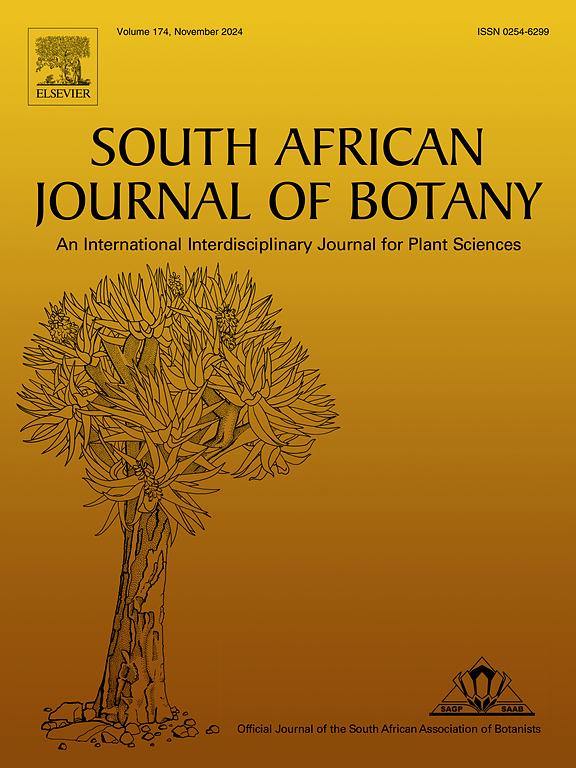The population genetic structure of Ficus craterostoma in South Africa
IF 2.7
3区 生物学
Q2 PLANT SCIENCES
引用次数: 0
Abstract
In the eastern part of its distribution, Ficus craterostoma occurs in Afromontane forests whereas it also occurs in low-lying scarp and Indian Ocean coastal belt forests in South Africa. Ficus craterostoma must have dispersed to these low-lying forests from the Afromontane forests, even though forests became highly fragmented during the Pleistocene. To understand how these ancient changes have impacted the distribution and population structure of F. craterostoma we quantified the genetic variation in its slow-evolving chloroplast DNA with limited dispersal ability via seeds, and its highly variable nuclear microsatellites that reflect exceptional pollen flow. The chloroplast variation was highly structured and frequently monomorphic in nearby forests while the nuclear variation showed little structure and isolation by distance. From these data we reach several conclusions. Ficus craterostoma may have become extinct from South Africa's northern Afromontane forests during the Pleistocene. These forests were possibly subsequently recolonized from southern forests that may have been scarp or Afromontane in nature. Additionally, there was one scarp and one Indian Ocean coastal belt forest refugium, both of which were very isolated and small. Nuclear gene flow caused by pollen flow is very effective along the western part of the South African population, knitting together Afromontane and scarp forest fragments, dispersed over 1000 km, into one genetic population. Conversely, the Indian Ocean coastal belt forest refugium appears to have been isolated in terms of gene flow, but more recent gene flow with two nearby inland forests may have started to homogenize their genetic variation. Due to the unusual pollination system of fig trees, other forest tree species may display very different dynamics.
求助全文
约1分钟内获得全文
求助全文
来源期刊

South African Journal of Botany
生物-植物科学
CiteScore
5.20
自引率
9.70%
发文量
709
审稿时长
61 days
期刊介绍:
The South African Journal of Botany publishes original papers that deal with the classification, biodiversity, morphology, physiology, molecular biology, ecology, biotechnology, ethnobotany and other botanically related aspects of species that are of importance to southern Africa. Manuscripts dealing with significant new findings on other species of the world and general botanical principles will also be considered and are encouraged.
 求助内容:
求助内容: 应助结果提醒方式:
应助结果提醒方式:


